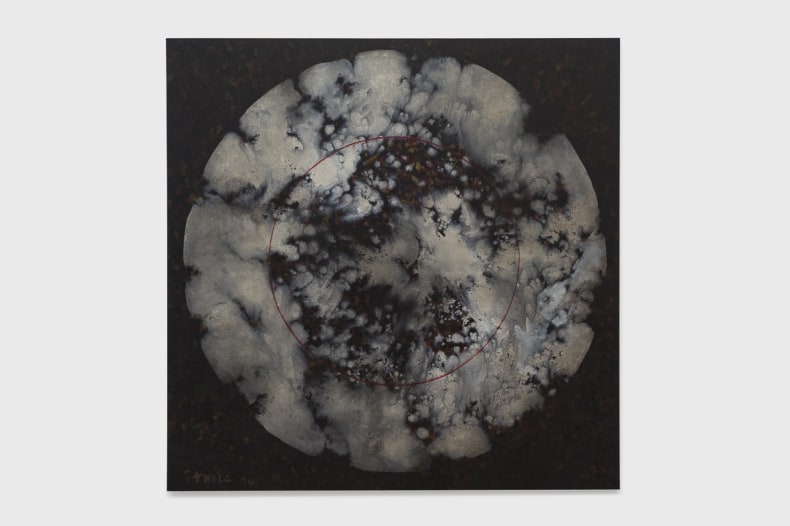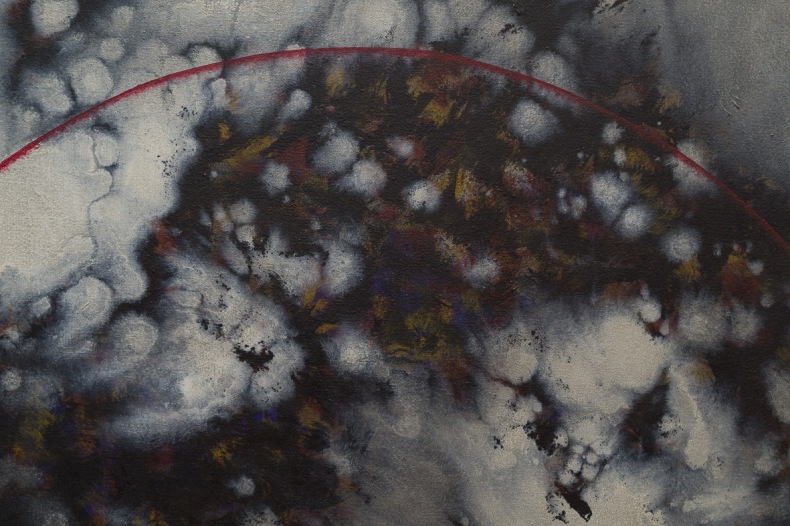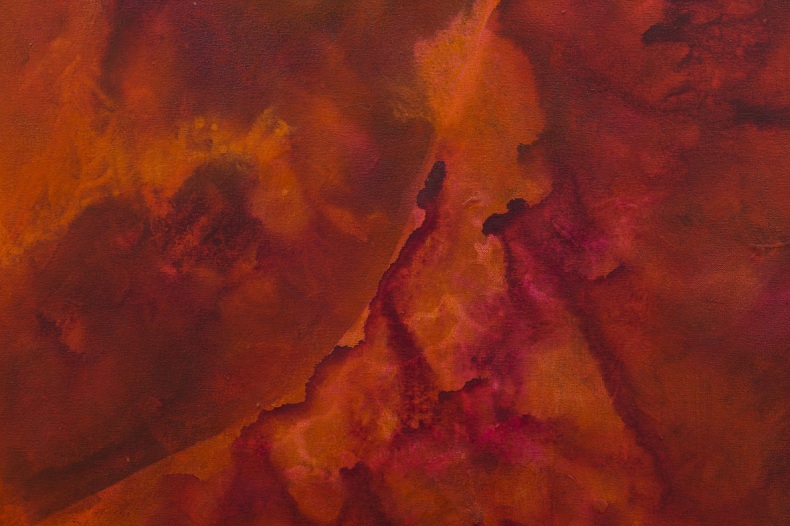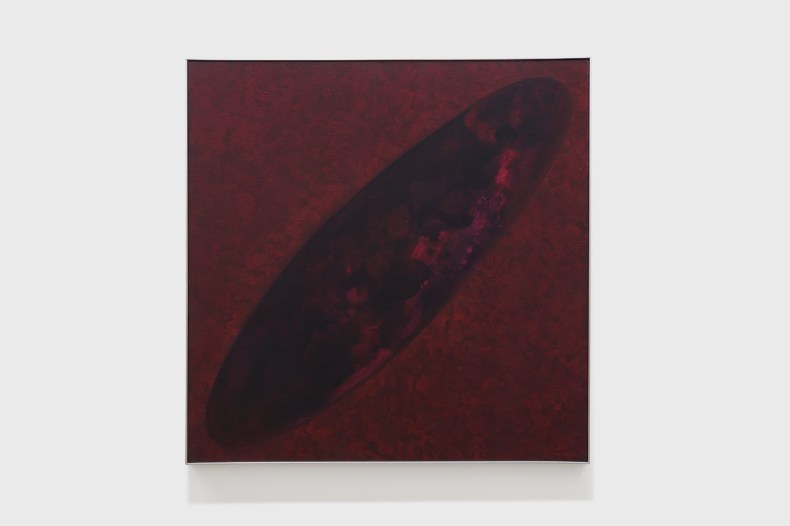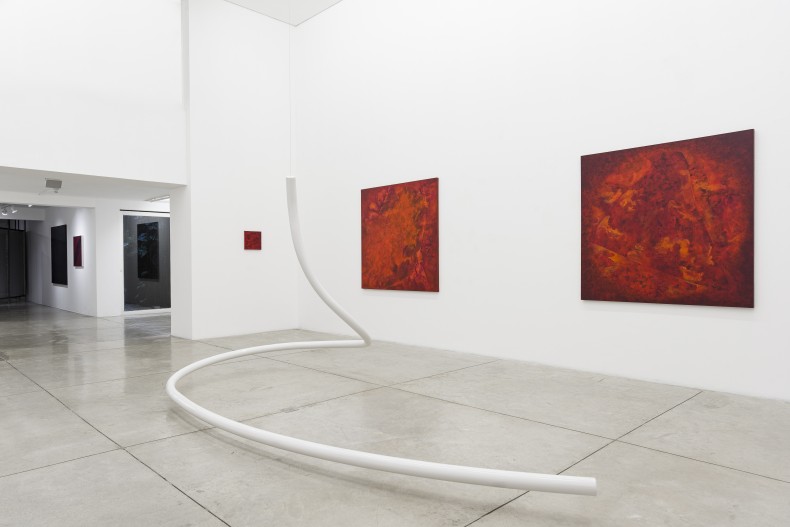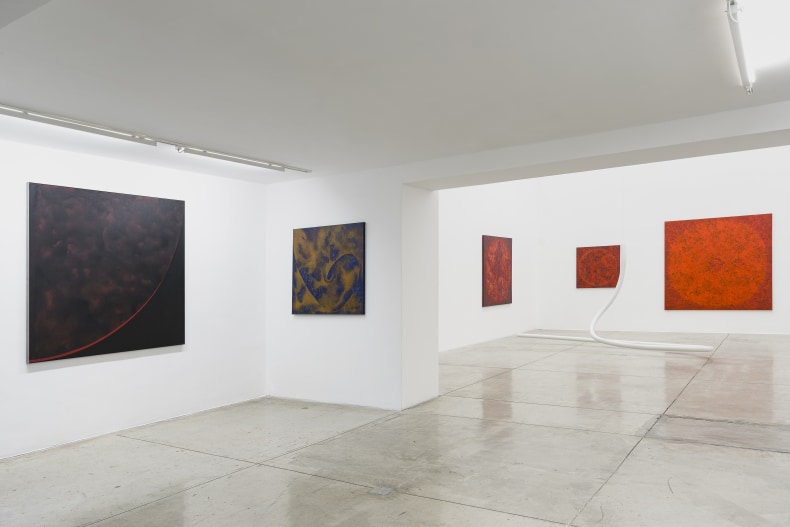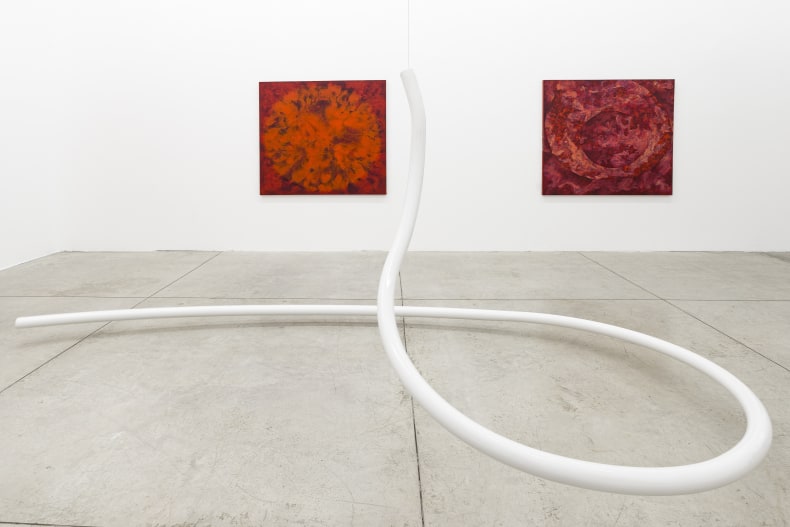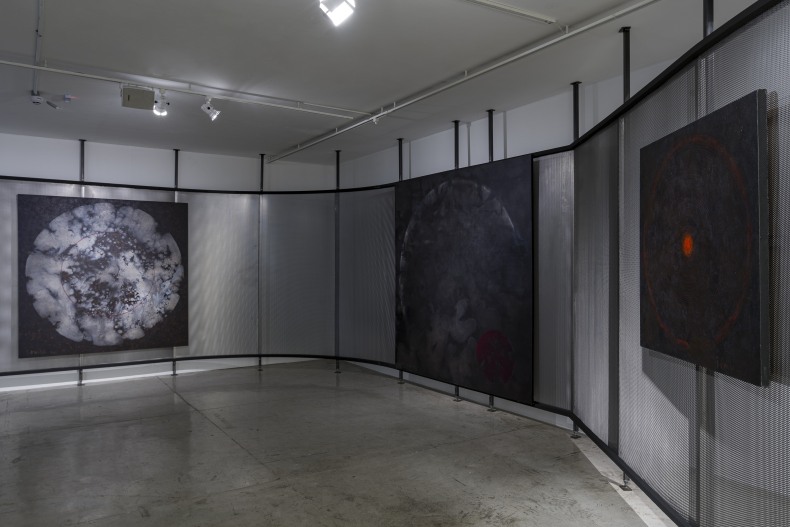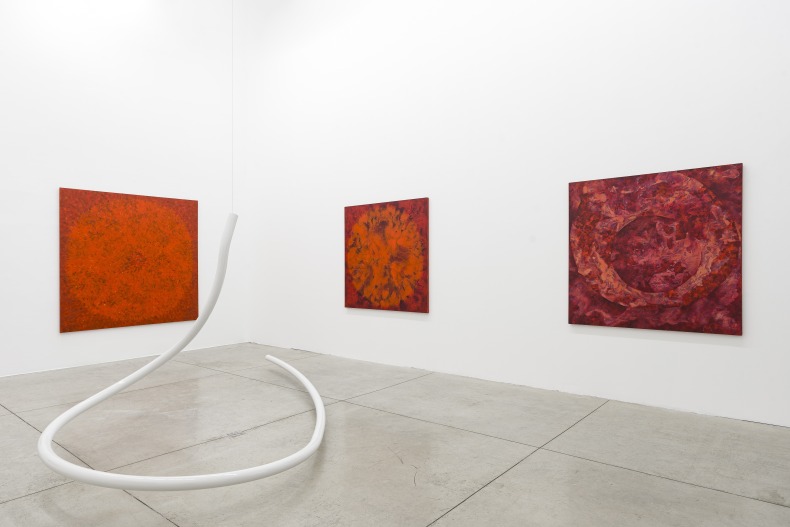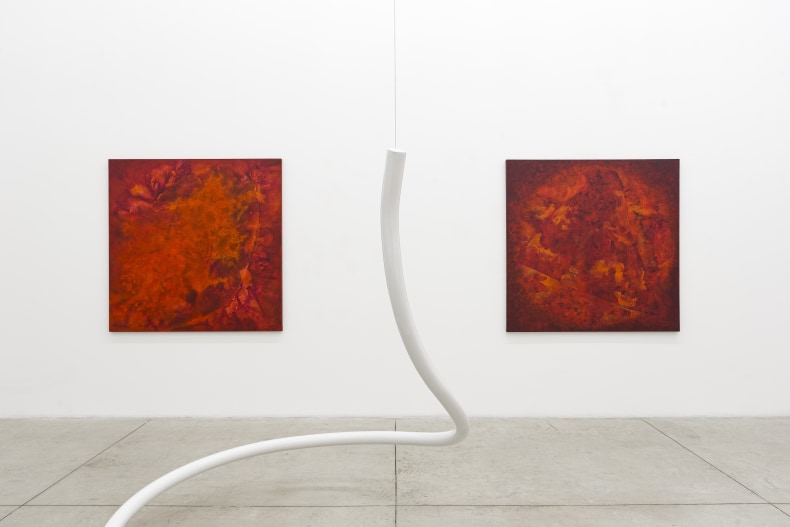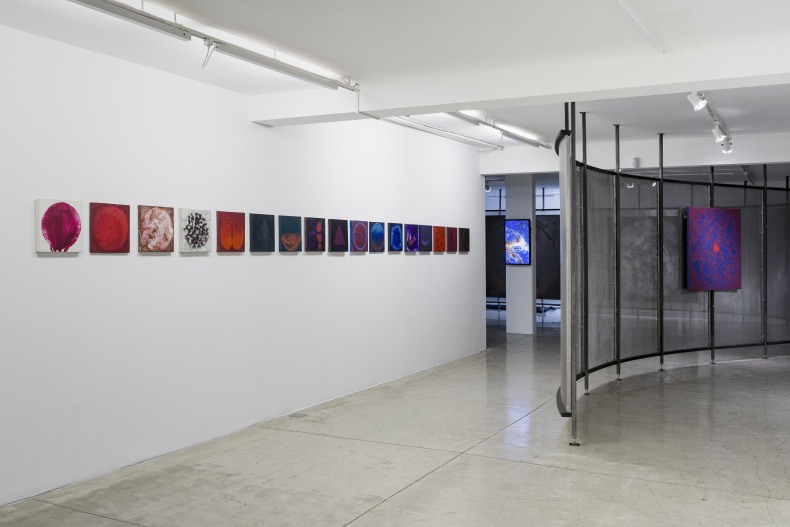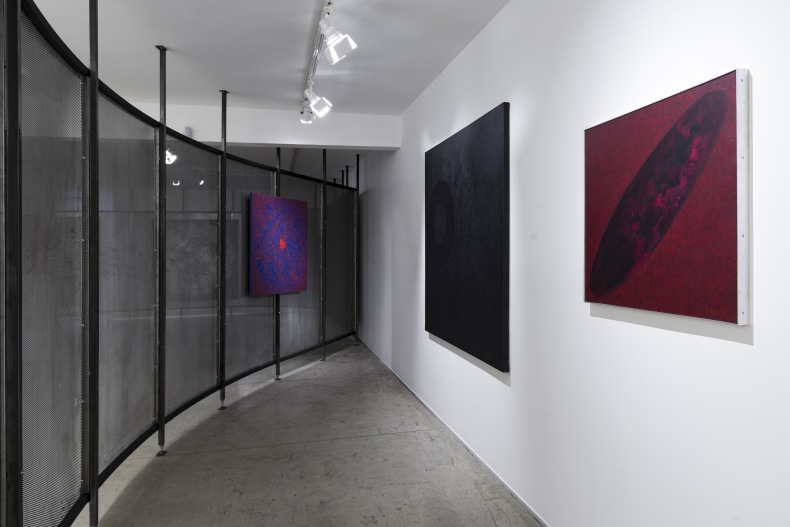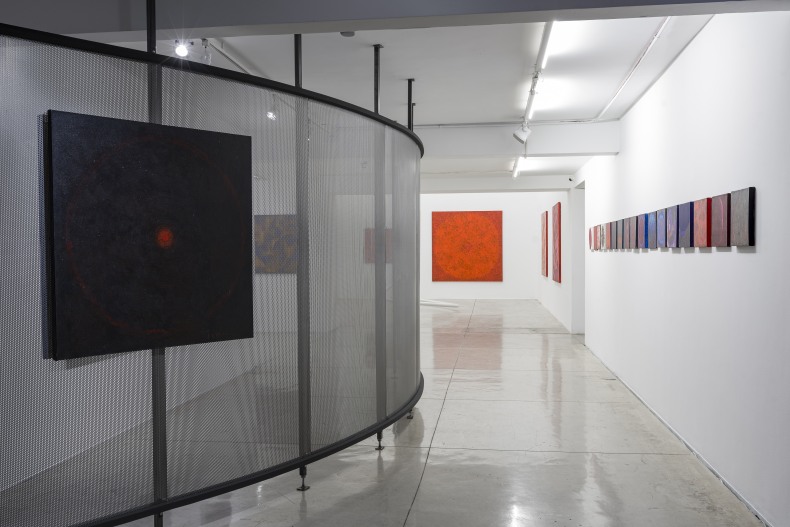In partnership with the Instituto Tomie Ohtake, Nara Roesler is pleased to present Infravermelho, a solo show by Japanese-Brazilian artist Tomie Ohtake (1913-2015). Paulo Miyada, the Institute's artistic director, worked alongside Rodrigo Ohtake, the architect and vice-president of the institution, to curate and design the exhibition. Parallel to Tomie Ohtake's work being presented for the first time in the Venice Biennale main exhibition, Infravermelho offers an opportunity to examine more closely an important stage in the artist's work.
In the exhibition, paintings, and a sculpture relevant to understanding Tomie Ohtake's production in the 1990s are presented in an arrangement that emphasizes their cosmological analogy. Today, with the impact of images produced from the data collected by the James Webb telescope, which captures light in the infrared spectrum that is invisible to the human eye, we are living in an era of renewing the collective imagination about the origins, expansion, and limits of space: which creates the opportunity to reinvestigate the role of the cosmic in Ohtake's work. Previous art critics such as Frederico Morais and Miguel Chaia have also pointed out this relationship, coining the term "Cosmic Tomie".
In the 1990s, when Tomie Ohtake was already established as an important Brazilian abstract artist and a key figure for the Japanese-Brazilian community, she transitioned from using oil paint to exploring acrylic paint in her work. This moment coincided with the transition from a creative process based on studies with collages of cut-out papers to the direct investigation of painting from synthetic forms: circles, spirals, ovoids, and amoeboids. In the same decade, Ohtake began producing sculptures as curved metal lines, modeled on a human scale from tiny wire models.
According to Paulo Miyada, "this is a moment when the artist refines her attention to pictorial gestures in the superimposition of layers and transparencies, with a collection of archetypal forms as her recurring object. In this sense, Ohtake moves away from the matrices of concrete abstract art and approaches, at the same time, oriental traditions (especially ensō in Zen Buddhism) and evocative images of nature (especially the cosmos)."
